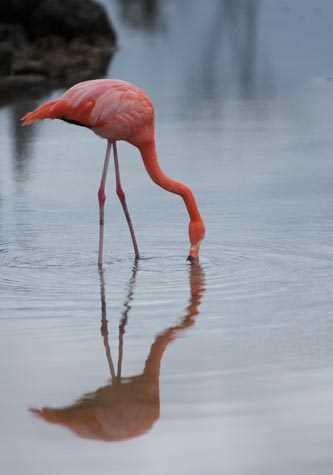This is a special week for us. Every year we have two photo-specific trips in Galapagos and this expedition is the first one. In addition to a team of Galapagos naturalist guides, we also have on board four photo experts from National Geographic and Lindblad Expeditions.
Today we started our day very early in morning with both a photography group and a natural history group visiting Dragon Hill. The idea was to take full advantage of the soft light that our Galapagos sunrises offer to photographers almost every day. Meanwhile, those interested in natural history had the opportunity to learn and enjoy this visitor site as well.
This area has been under restoration for over two decades now, and it was quite remarkable to see land iguanas in the wild once again. This place has also a brackish lagoon with migratory and lagoon birds such as pintail ducks, black-necked common stilts, sandpipers, semi-palmated plovers, and a single pink flamingo that was photographed by our experts. The fact that there was just one flamingo reminded us that the Galapagos archipelago is unique but very fragile and it needs our protection for future generations.
In the afternoon, we visited El Eden. This coastline is a good place for Zodiac rides because it has lots of bays with mangroves, sea turtles, rays, feeding sea birds and baby black-tipped reef sharks. We went exploring with six Zodiacs, each one with a naturalist and a photo expert.
In the evening, we circumnavigated around the islet of Daphne Major onboard the National Geographic Endeavour. This was a perfect activity to close our successful day of adventure in this oceanic archipelago.







